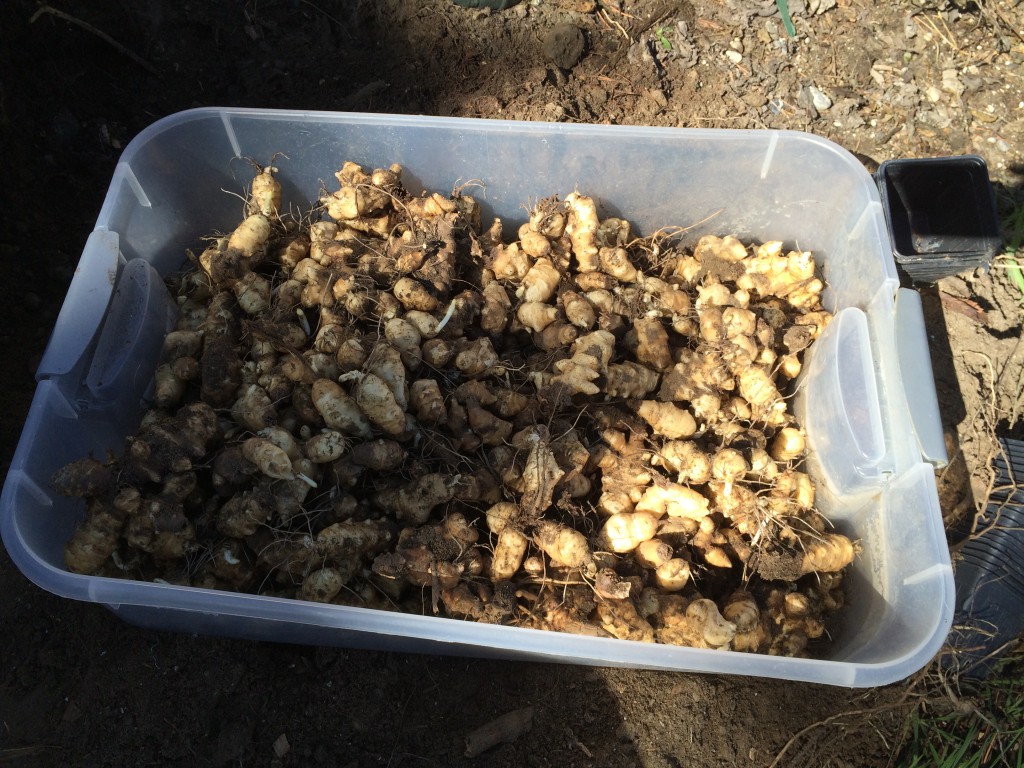Mid Columbia Gardens started selling plants to make available to everyone plant varieties that weren’t being provided by the Nursery Industry: Red tomatoes bred for long-season heat resistance; sweet, rich orange tomatoes in all sizes; container tomatoes that keep producing all season; peppers unique and integral to cultural cuisine around the world.
We particularly wanted to serve the needs of customers in Eastern Washington, where the summers are long and hot and dry, but irrigation is readily available, and the ground is rich in needed minerals. We focused on varieties that would go the distance all season, and adjusted our inventory based on customer feedback for local production and quality.
Heirloom Revival
Since we first began, interest in heirloom and non-commercial seeds has increased greatly, and even mainstream nurseries and department stores carry a few varieties labelled “heirloom” to try to capture this market. Out of over 5,000 open-pollinated (in other words, you can save the seeds) tomato varieties listed in the Seed Saver’s Yearbook or catalogued at Tatiana’s TOMATObase, local stores carry maybe 10? And that wouldn’t be so bad, except it’s the same ten at every seed stand, every nursery, every department store. Mostly this is because they all get their seeds, and their plants, from the same place. Heirlooms are a side-line to these companies, sold in lesser quantity, lesser quality, and higher prices–similar to the organic section in the grocery store. More on heirloom abuse in a moment.
Nursery and Breeder Consolidation
Every year fewer sources provide more plants to more nurseries. Chemical companies control most of the seed and propagation lines, so have a vested interest in producing plants that grow best with their chemicals. We’re very close to a razor blades and printer ink market (wherein the companies sell cheap printers or razors and make up the profits in ink or razor blades). Companies that breed seeds, cuttings, and graft scions do so entirely for the “intellectual property” benefits, and the larger companies that buy them up do so for the chemical portfolio they can offer alongside them. It’s hard to fault any of them for doing what they need to to make money, but this consolidation has significantly impacted the types of plants that are available in established retail locations.
Billions of plants are grown to exactly the same standards and dumped into the retail channels long before they can be planted (those warm-weather vegetable plants that appear in hardware and department stores in February will not survive if you buy them and put them in the ground). Then the supplier buys them back from the stores if they don’t sell. These plants create a market for the sales of garden chemicals, garden tools, garden services. Their economies of vast scale allow sales of cheap plants amid staggering numbers of unsold and inappropriately sold retail plants, but do so at the expense of plant diversity and choice.
“Intellectual Property”
Patented, trademarked, hybrid, controlled plants dominate this market. “Intellectual property,” when it refers to plants, is actually a government-granted monopoly on the reproduction of living things. Even publicly-funded university programs, which used to return freely-usable plant varieties to the public, now patent, trademark, and tie up the results of their research in as much propriety legal protection as possible in an effort to maximize profits for their cash-strapped programs. It is illegal to propagate the vast majority of plants (especially annual plants that must be replanted each year) that you buy at a nursery–any nursery–and they’ve done their best to sterilize and hybridize them to the point that even if you do save their seeds, they not only won’t come true, but will produce undesirable plants or won’t even germinate.
So, what’s wrong with economies of scale driving down plant prices for everyone? Well, first of all, they won’t grow well. They won’t grow when a customer buys them when they appear in stores and the soil and air are too cold for them. They won’t grow well when the hormonally-primed and heavily fertilized plants hit your relatively sterile ground and have to shift gears for a completely different environment. They won’t grow well because they’ve been bred in Alabama and aren’t really equipped for a long-season shrub-steppe in one of the less-common climatic environs of the U.S. They won’t grow well unless you give them the insecticides, herbicides (for competitors), fungicides, and chemical fertilizers they were bred to grow well with.
A lot of people like the self-sufficiency of growing their own food. This is diminished when you have to buy seeds or plants from a store every year (since the seeds can’t be saved), buy fertilizers from a store every year, buy poisons from a store every year. I’m not saying you have to garden for sustainability or self-sufficiency, just that you’re not really going to be able to do so with any of the commercial plants.
Return to Fundamentals
This brings us back to varieties that are not restricted from reproduction. Heirloom varieties have been saved year after year, selecting for desirable traits along the way. But there are many types that come true from seed, often called open-pollinated, which have been intentionally bred by professionals, amateurs, governments, and corporations, all over the world.
All of these have been adapted to someone’s garden. Not your garden, of course. You need to grow a few. If something does well, if it tastes good, grow it again. Save the seeds and share them. If it doesn’t do well, or isn’t to your taste, or you just don’t like the look of it, grow something different. 5000 varieties and more each year, remember?
If your store only offers 10, though, and those are adapted for other parts of the country, you have a problem.
Hope for Nurseries
For the chemically-dependent, legal-monopoly-reliant, mass-production monoculture industry, is there an alternative? Of course there is. Just as in computers we have huge companies that make their money on open-source, community-developed software, we have growing companies like Baker Creek, and the aforementioned Tatiana’s which bring great abundance to their customers while depending on open, uncontrolled seeds and plants. Will they reach the local level with ready-to-grow plants for you and me?
Well, they used to. The truth is, the last 50 years have been an anomaly. Previously, local nurseries grew their own plants from their own seeds and parent plants. Now, they all mostly grow plants from patented liners sent to them from the same sources. The local growing cooperatives dictate to their growers what they must grow and how. Even my favorite local nurseries now grow hardly any of their own stuff.
It doesn’t have to be that way, though. Outside of the immediate Tri-Cities, Washington area, there are many nurseries doing their own thing. Whenever I travel, I tour the local nurseries, looking for all of the out-of-the-way places doing out-of-the-way things. I think we can do it here, too, if people are willing to think about what they grow and why.
I’m not out to change an industry. I just want you to have the same options that your grandparents did. You can eat the same tomatoes they did, thanks to a vast community that has saved their seeds. Or you can explore the wondrous new varieties produced by people all over the world every year, and shared, over and over again.
We want to help with that.
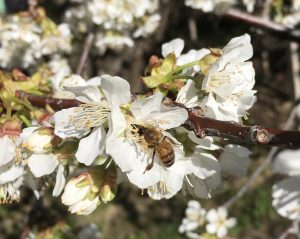 ery fundamental about growing food. For all of human history, our relationship to the land, and to the living things on it, has been central to our identity, and has dictated our culture, our successes, and our values.
ery fundamental about growing food. For all of human history, our relationship to the land, and to the living things on it, has been central to our identity, and has dictated our culture, our successes, and our values.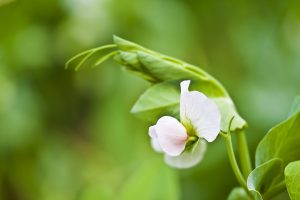 However we choose to do it, though, I believe that we all have a need to grow things, and an amazing talent for it, somewhere within us. Food, and growing food, connects all of us–in our communities, in our world, in who we are and what we value. In growing, as in all of the most important endeavors, we find that it is we, ourselves, who grow the most. Together, I think we can grow amazing things.
However we choose to do it, though, I believe that we all have a need to grow things, and an amazing talent for it, somewhere within us. Food, and growing food, connects all of us–in our communities, in our world, in who we are and what we value. In growing, as in all of the most important endeavors, we find that it is we, ourselves, who grow the most. Together, I think we can grow amazing things.

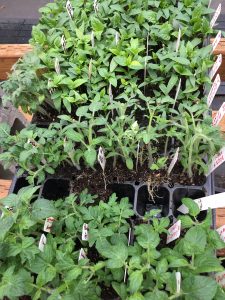
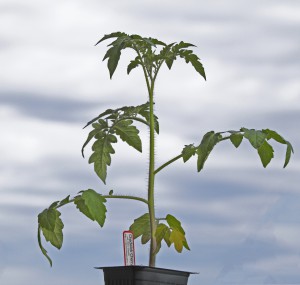 We are now
We are now 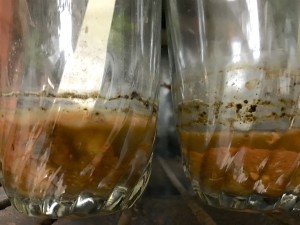 With the growing season well behind us and the new one still a bit off, December is a month of reviewing what went wrong and right in the old year (and end-of-the-year accounting and taxes).
With the growing season well behind us and the new one still a bit off, December is a month of reviewing what went wrong and right in the old year (and end-of-the-year accounting and taxes).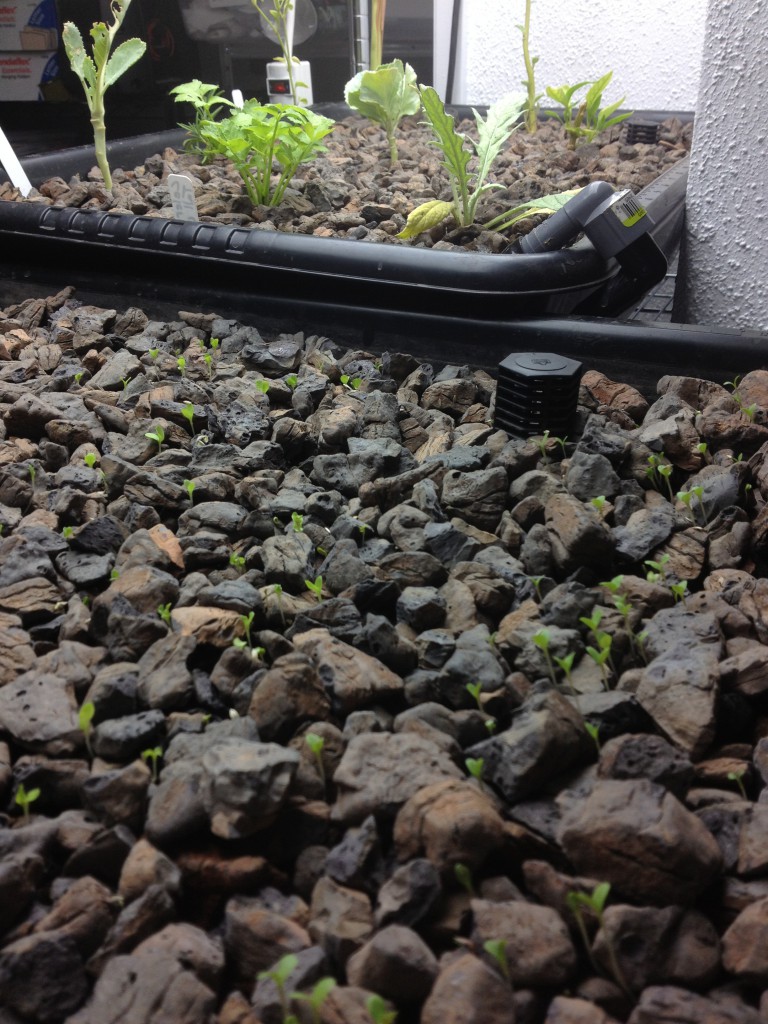
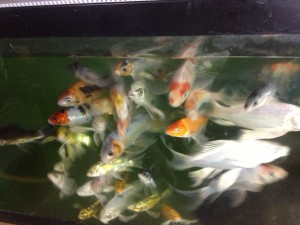
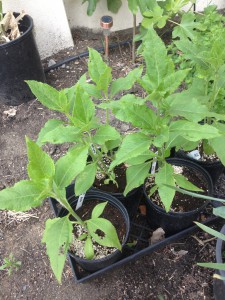
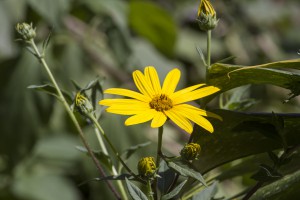 Sunchokes are quite hardy in our area, but ought to be lifted every year to harvest and thin them. In some parts of the country they can be invasive (too dry here, I suspect). I was busy, however, and never managed to get around to it that year. Last spring I was delighted to see a dense patch of them sprouting up in the same spot, and the display was even more spectacular than the previous year, although they tended to fall over on top of everything around them.
Sunchokes are quite hardy in our area, but ought to be lifted every year to harvest and thin them. In some parts of the country they can be invasive (too dry here, I suspect). I was busy, however, and never managed to get around to it that year. Last spring I was delighted to see a dense patch of them sprouting up in the same spot, and the display was even more spectacular than the previous year, although they tended to fall over on top of everything around them.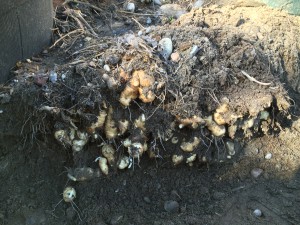 Finally, early this spring I managed to get out there with a small tray to dig up the tubers. The clump had remained only three to four square feet in size, but the tubers were stacked on top of each other almost twelve inches underground, and so densely packed that it would be more accurate to say that I picked them apart, rather than dug them up.
Finally, early this spring I managed to get out there with a small tray to dig up the tubers. The clump had remained only three to four square feet in size, but the tubers were stacked on top of each other almost twelve inches underground, and so densely packed that it would be more accurate to say that I picked them apart, rather than dug them up.